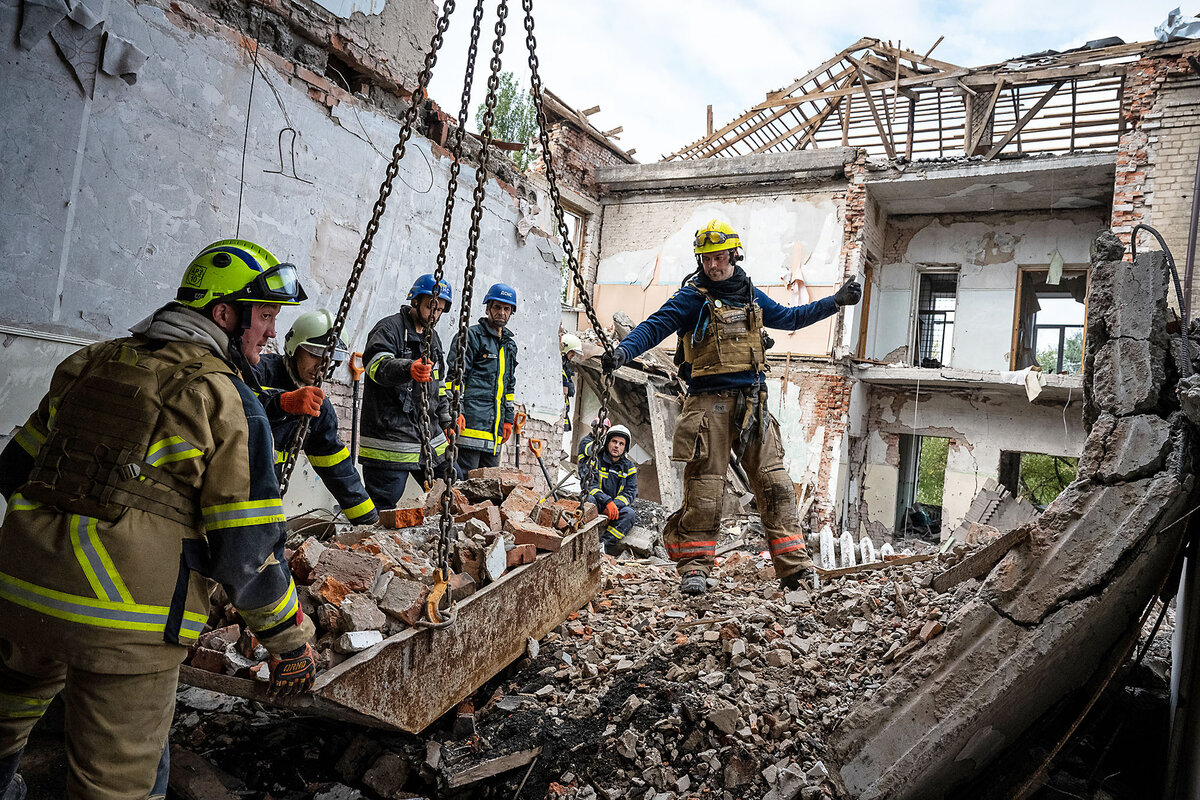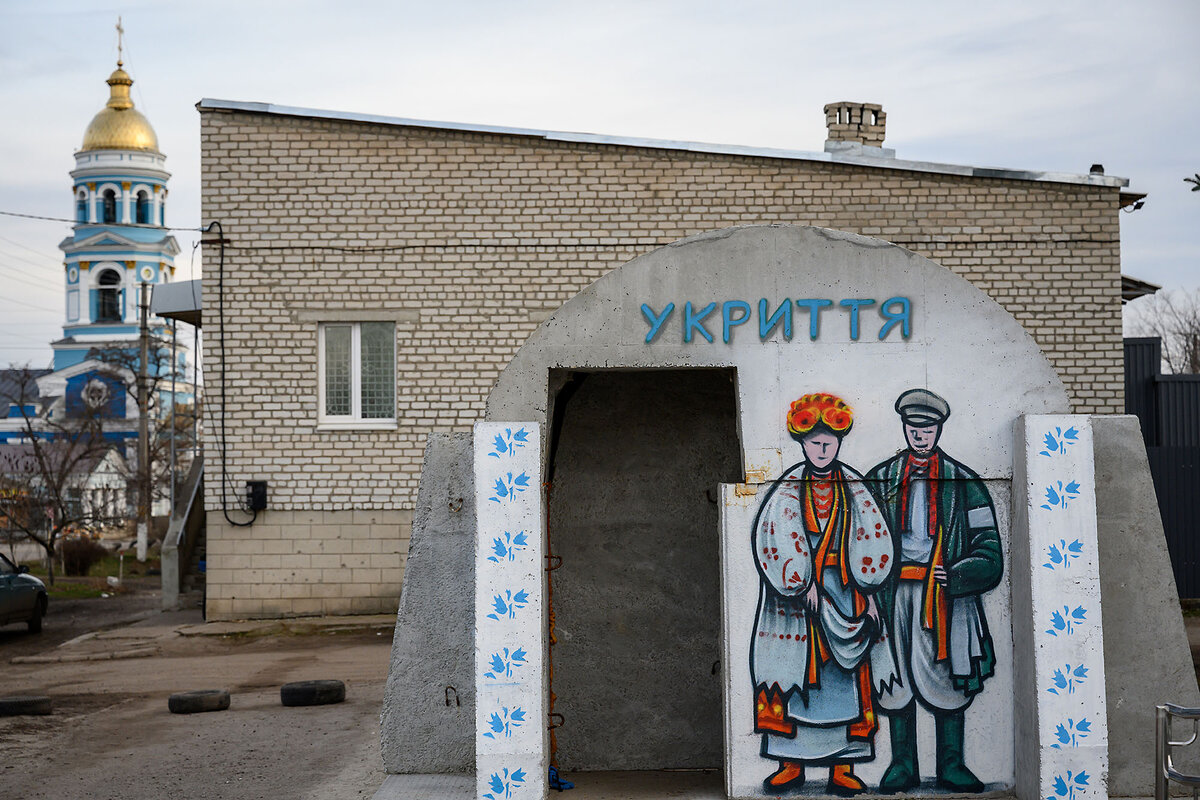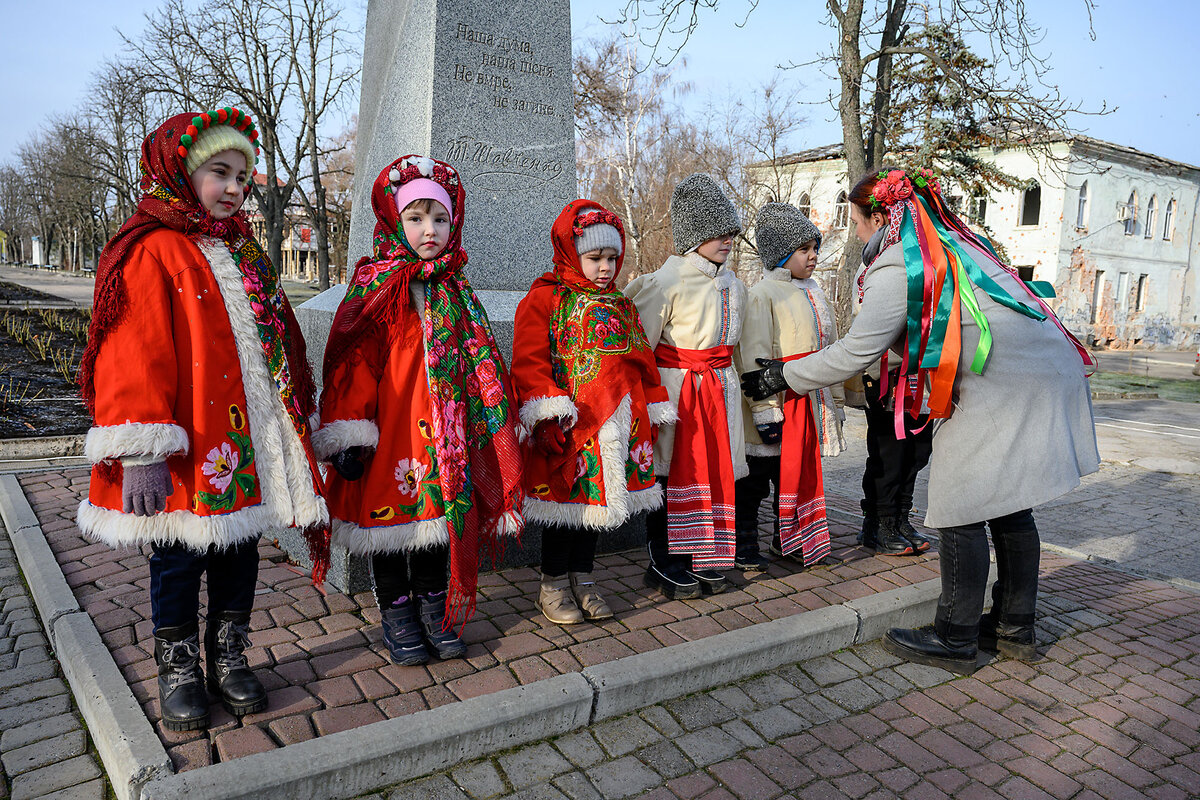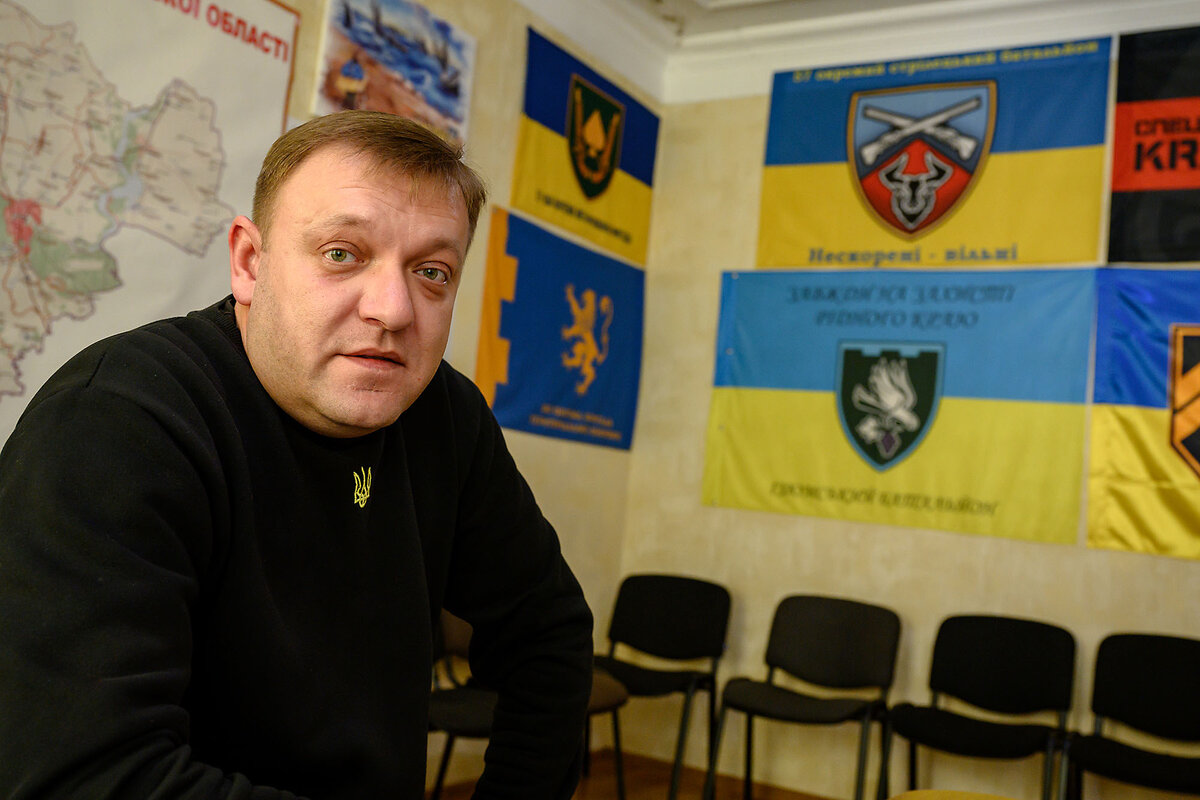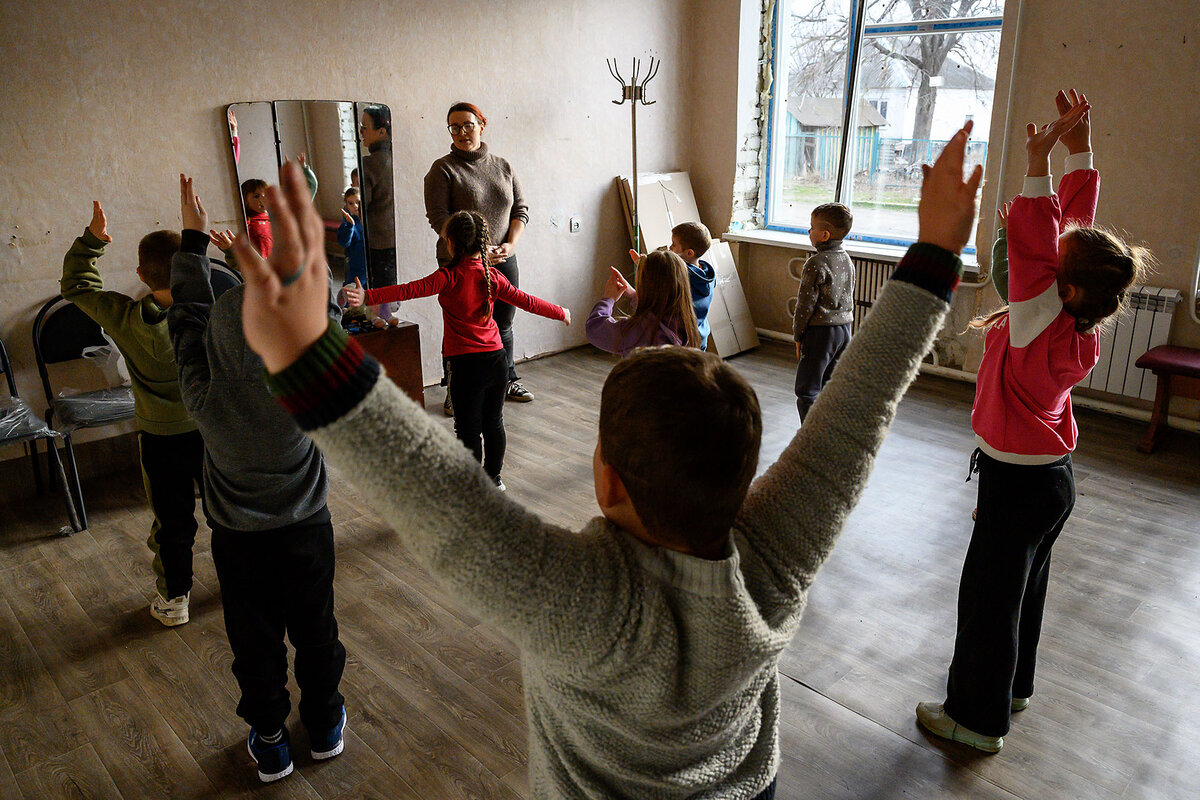Once-occupied Ukraine towns try to stay defiant amid fear over Russia gains
Loading...
| Izium, Ukraine
The veteran Ukrainian history teacher and education official in Izium had courageously kept it all together during the six-month Russian occupation in 2022.
She had refused to collaborate because it was “against my ideology,” she told the Monitor soon after Ukraine forced the Russian troops out. Her heart ached when colleagues chose to work to advance Moscow’s plan to create a “Russkiy Mir,” or Russian World, in occupied Ukraine.
And she was bold. Natalia Filonova went outside to find a phone signal, even during bombardments, and slept in the house while her husband slept in the basement.
Why We Wrote This
A story focused onUkrainian towns occupied three years ago resisted the imposition of “Russkiy Mir,” or Russian World. But amid recent Russian battlefield gains and a radical shift in U.S. diplomacy, residents now fight fears and struggle to remain defiant.
Liberation in September 2022, was “one of the happiest days of our lives,” she says, while the memory of Ukrainian troops passing their house that day “just brings tears, again and again.”
But in a delayed reaction, the impact of all the pent-up stress and anxiety of life under Russian control came rushing out a year later.
Ms. Filonova’s hands quivered beyond her control, she experienced bouts of nausea, and she forgot how to use basic work software. Her physical and emotional health declined, and she underwent a month of treatment.
“You can still see in Izium many, many people going around, their hands are shaking, they still have [post-traumatic stress disorder],” says Ms. Filonova. “People are stressed and scared of [Russian occupation] coming back.”
A hard anniversary for Ukraine
Russian World failed to take root in this eastern Ukrainian town and everywhere else recaptured by Ukraine. But residents say steady Russian military pressure – combined now with an American president’s apparent parroting of Kremlin talking points about the war, and his push for a ceasefire that could include Ukrainian territorial losses – means Russia is also winning in a different way, by escalating Ukrainian anxiety.
It leaves a bitter taste for Ukrainians, as they mark the third anniversary of Russia’s destructive all-out invasion of their country on Feb. 24. And for Ukrainians who lived directly under Russia’s yoke, their experience makes them all the more wary of conceding any territory.
“We know the front-line situation around Izium is not very good; it’s critical,” says Ms. Filonova, her once-shaking fingers now sporting green nail polish with sparkles, as she speaks about Izium’s torment in the shadow of Russia’s advance along much of the 600-mile-long front.
That line remains beyond artillery range, some 28 miles away. But to the northeast, people displaced by fighting from the town of Borova – just seven miles from the front – recount harrowing tales of destruction.
Earlier this month, a Russian missile strike on Izium killed five people and wounded more than 50.
Uncertainty over the future is trapping Ukrainian communities that are anywhere near the front, like Izium, in limbo as they struggle to carry on daily life, find normalcy and distraction, and rebuild.
“A year ago I would never think there is a possibility of this [Russian] occupation again,” says Ms. Filonova.
“We made a decision that we are not going to go through that for a second time, even though we love our home, and it would be sad to leave it,” she says. “As you know, the Russian method now is to destroy everything. We are not going through that again.”
Still, across Izium are regular acts of defiance, like the celebration of Ukraine’s Unity Day last month. Students braved biting cold to hold Ukrainian flags, dance, and perform, as city officials laid flowers at a central monument.
The event was not publicized in advance, and no more than 50 people were allowed to gather, to minimize the chance of attracting a Russian strike.
“We understand it is dangerous, and we are very close to the front line,” says Yevheniia Reshetniak, a former teacher whose 6-year-old daughter Milana had joined other girls with traditional bright red costumes and crowns of small flowers in the ceremony.
“But it’s important for us to have the smallest opportunity to be together, to celebrate something, finally – it’s crucial,” she says.
The family lost everything when they evacuated in 2022, before the Russian occupation. “Even my stuffed dog was stolen,” recalls Milana, grimacing at the memory of returning to a damaged and looted house.
“Of course, we are very much worried, especially about [Milana],” says Ms. Reshetniak. “As soon as it gets too dangerous and something heats up in this direction, we will immediately evacuate her.”
Optimism about Ukraine’s future?
City officials say the prewar population of 50,000 fell to 13,000 during the Russian occupation, but has rebounded to 27,000, with many still returning.
“The situation in Izium is stable enough for people to live here, and thank God we are not getting shelled or bombed on a big scale,” says Kostiantyn Petrov, secretary of the Izium City Council.
Right after Russian forces were forced out, “people were depressed and damaged – we could see in their eyes they were shocked and frightened,” he says. The Russians had turned schools into fighting positions and surgical stations, stole cutlery, and left nearly 450 corpses buried in a forest marked by wooden crosses. But slowly concerns eased, as the “main features of civilization” – like electricity, gas, heat, and water – came back.
The military has told local officials the risk of a second Russian occupation is low, and “not considered even in a worst-case scenario,” says Mr. Petrov.
“Some people are too scared to come back, but people who are here are determined to stay,” he says. “A lot of people in Izium are optimistic about their future here. They believe in victory, and are inspired by the fact that Izium was liberated.”
Among them are a group of teens who take online lessons, roam the streets, and gather at a local cultural hall for dance classes.
“A lot of people our age came back,” says Klim Velychko, a 19-year-old photographer with tattoos on his chilled hands.
Proximity to the front line “doesn’t bother us at all; we are not afraid of that,” says his friend Lana Sukhomlyn, 17.
“After occupation, I don’t fear anything,” adds Ivan Pustelnyk, 14. “It’s not like we don’t care; we just focus on other things.”
Providing that change of focus is Olesia Biliaha, a choreographer who runs craft classes for younger children, and movement and dancing lessons for all ages in a joint program supported by UNICEF and the Howard Buffett Foundation.
With schools closed, there are few other options for students to socialize.
“These children don’t even know how to communicate with each other,” says Ms. Biliaha about the youngest children, who arrive wreathed in smiles.
“We’re staying, we’re not leaving anytime soon,” she says. “The fact that this program has been extended for a third year gives me hope and certainty for the future, that there is something to look forward to.”
Oleksandr Naselenko supported reporting for this story.






